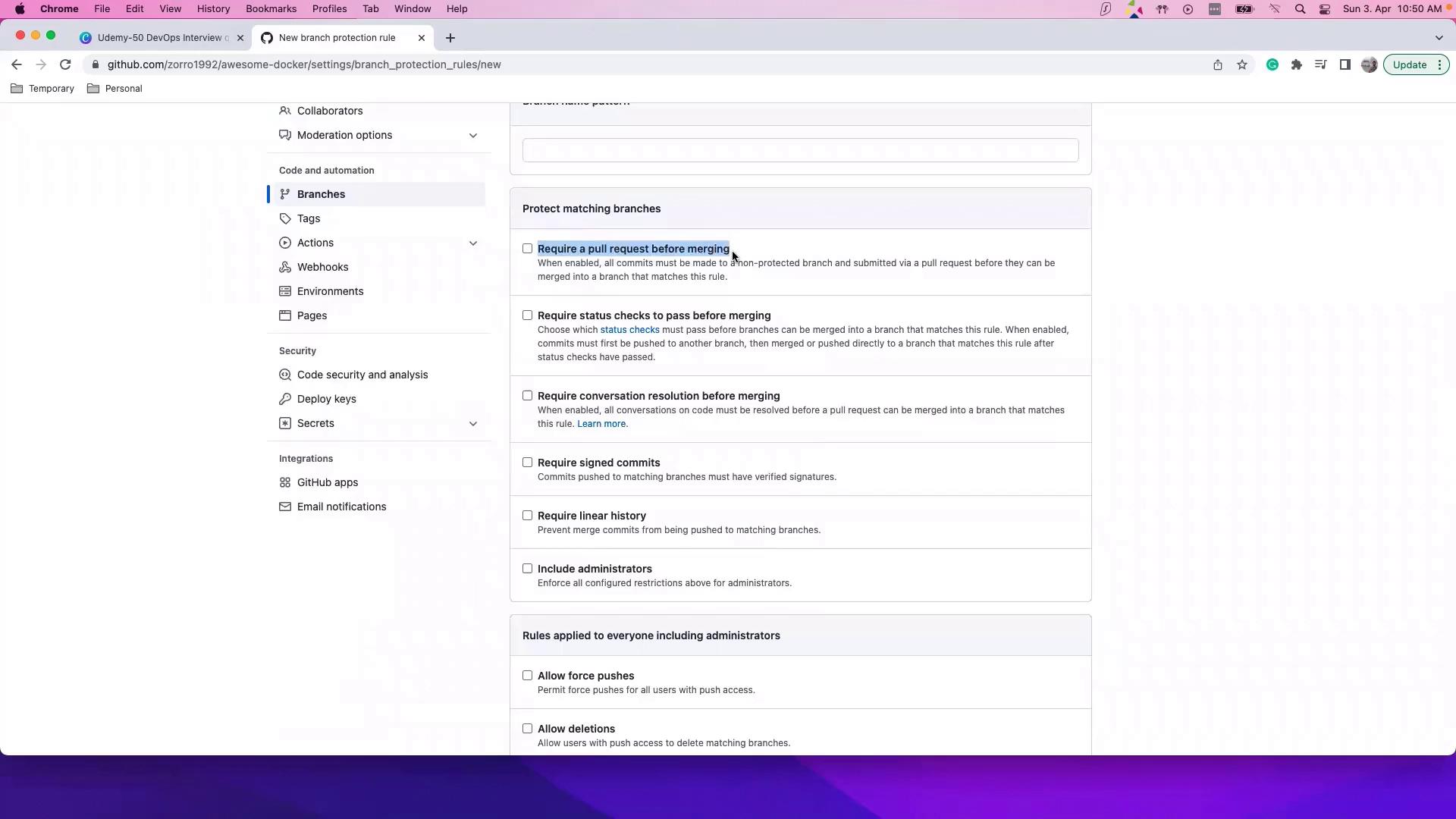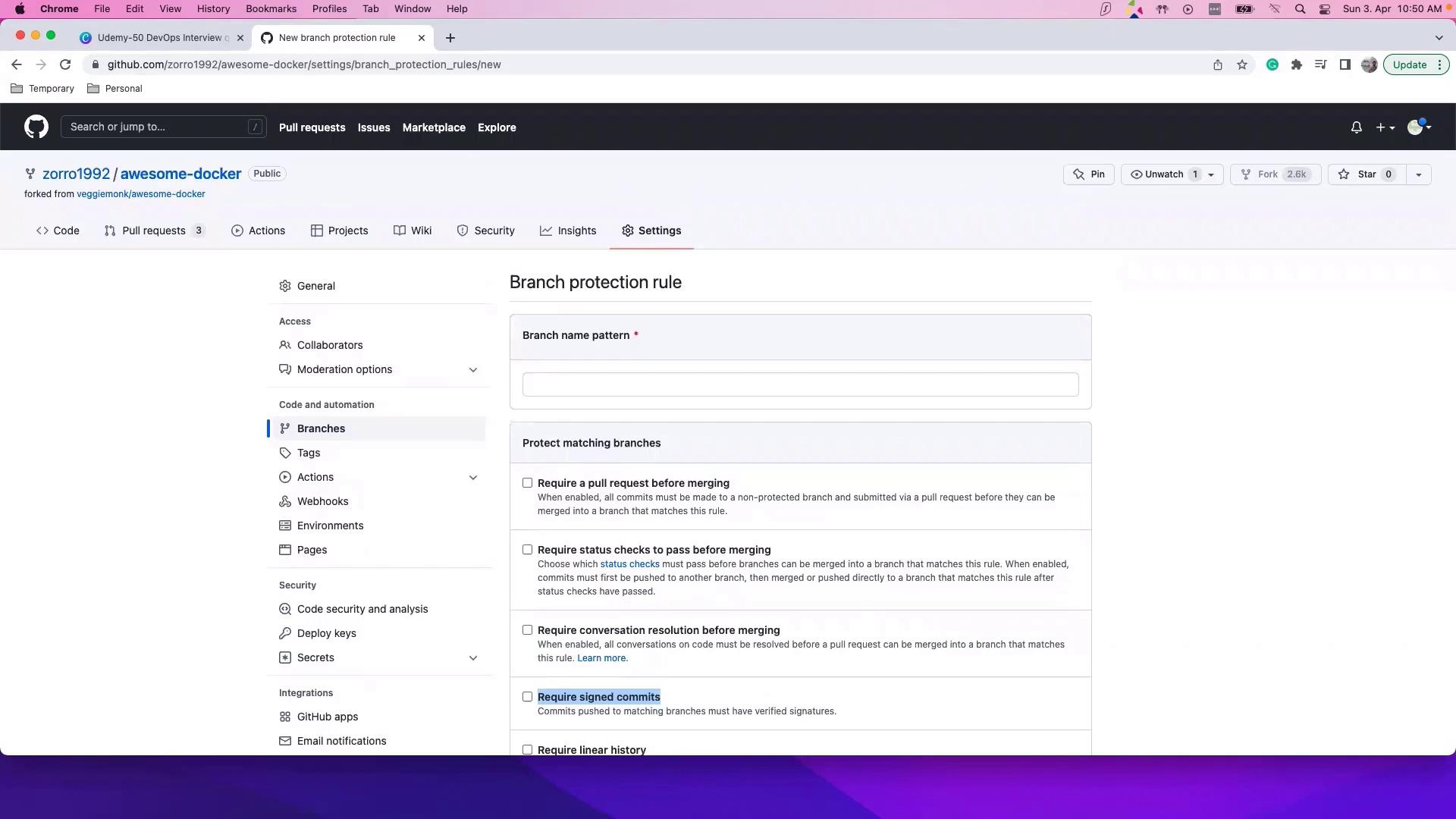DevOps Interview Preparation Course
Git
Git Question 3
In this article, we explore the concept of branch protection in GitHub—an essential safeguard for developers working in collaborative environments. Branch protection helps prevent direct merges into critical branches like master or main without proper oversight, enhancing security and code quality.
Understanding the Git Workflow
Consider a typical GitHub repository with a master (or main) branch accompanied by one or more working branches. When you commit changes (e.g., "change 01" and "change 02") in a working branch, you then open a pull request (PR) to merge these changes into the master branch. However, merging PRs without review is prevented by branch protection, ensuring that every change undergoes the necessary validation.

What is Branch Protection?
Branch protection is a mechanism that isn’t enabled by default. Organizations must actively configure branch protection rules to prevent direct merges that bypass the review process. Without these safeguards, users with write access could merge changes into the master branch without proper scrutiny—a practice most companies wish to avoid.
Key Benefit
Branch protection rules require that pull requests meet specific criteria—such as reviews and passing status checks—before they are merged. This ensures that only thoroughly vetted changes make it into your production code.
How to Enable Branch Protection
To activate branch protection, follow these steps:
- Navigate to your repository's Settings.
- Click on Branches.
- In the Branch Protection Rules section, click Add rule.
- Configure settings such as:
- Requiring pull request review before merging.
- Enforcing status checks.
- Requiring signed commits.

Once these rules are in place, every PR must adhere to them, ensuring that only verified code contributes to the production-ready branch.

The Importance of Branch Protection
Ultimately, branch protection serves as a vital component of modern software development, enabling teams to collaborate safely and efficiently. During interviews or team discussions, you might explain that branch protection:
- Prevents unauthorized or accidental changes to the master branch.
- Ensures that every pull request is rigorously reviewed and meets predefined quality criteria.
- Helps maintain the stability and reliability of the production environment.
Without these rules, code changes could be merged without sufficient oversight, potentially introducing bugs or inconsistencies into the production codebase.
Caution
Failing to implement branch protection can lead to security vulnerabilities and unstable code deployments. It is critical to enforce these rules as part of your development workflow.
Conclusion
By enabling branch protection via the GitHub UI (Settings > Branches > Branch Protection Rules), organizations add an extra layer of security and quality control to their development process. This proactive approach ensures that every change is carefully reviewed, preserving the integrity of the codebase.
For more technical insights and detailed guidance on collaborative development practices, explore additional resources on GitHub Documentation.
Thank you for reading, and stay tuned for more in-depth articles on best practices in collaborative software development.
Watch Video
Watch video content